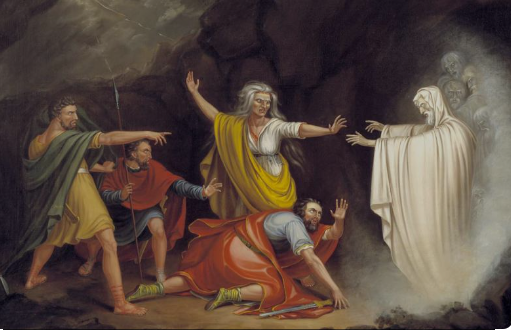Asmodeus: The Enigmatic Jewish Demon and His Origins

alcibiades
Introduction:
In the vast tapestry of Jewish folklore and scripture, few figures are as intriguing as Asmodeus, the demon king. Often depicted as a creature of great power and malevolence, Asmodeus has been a subject of fascination for scholars and enthusiasts alike. But who is Asmodeus, and where did he come from? In this article, we’ll delve deep into the origins of Asmodeus, explore the myths surrounding him, and uncover the sin attributed to this mysterious entity.
Also Read:- Unraveling the Myth of Fenrir: The Formidable Wolf in Norse Mythology
The Origin of Asmodeus:
The name ‘Asmodeus’ is believed to have been derived from the Avestan language, where “Aēšma-daēva” means “demon of wrath.” This gives us our first clue about the nature of Asmodeus – a being associated with anger and vengeance.
In Jewish tradition, Asmodeus is often linked to the Book of Tobit, part of the Catholic and Orthodox biblical canon. Here, he is portrayed as a malevolent spirit who kills seven of Sarah’s husbands in succession, preventing them from consummating their marriage. It is only with the intervention of the archangel Raphael that Asmodeus is defeated.
Who is Asmodeus Based On?
While Asmodeus is a prominent figure in Jewish texts, his origins might trace back to older civilizations. Some scholars believe that Asmodeus was influenced by ancient Persian demonology, where entities like Aēšma were feared and revered. Aēšma, in Zoroastrian tradition, is a demon of wrath and destruction, bearing striking similarities to Asmodeus.
Furthermore, elements of Asmodeus can also be found in ancient Mesopotamian myths. The demon’s association with lust and disruption of marital unions might have roots in tales of Mesopotamian deities and spirits known to interfere in human affairs.
The Sin of Asmodeus:
The sin most commonly associated with Asmodeus is lust. His actions in the Book of Tobit, where he prevents Sarah from consummating her marriage, are a testament to this. However, his malevolence doesn’t stop there. Asmodeus is also linked to wrath, envy, and deceit. His multifaceted nature makes him one of the most formidable demons in Jewish lore.
In Kabbalistic traditions, Asmodeus is sometimes referred to as the “demon of impurity.” He is believed to lead individuals astray, drawing them into the world of sin and away from spiritual enlightenment.
Is Asmodeus a Lord?
In many traditions, Asmodeus is indeed considered a ‘lord’ or a ‘king’ of demons. His power is said to rival that of other great demonic entities. In the Testament of Solomon, a pseudepigraphical text, King Solomon encounters Asmodeus and describes him as the king of demons. Here, Asmodeus reveals that he was born from the union of a human and an angel, further adding to his mystique.
In other traditions, Asmodeus is seen as the ruler of the Ninth Circle of Hell, where he presides over the souls of the damned. His lordship over other demons and his dominion in the underworld cements his status as a powerful and feared entity.
Conclusion:
Asmodeus, with his rich history and multifaceted nature, remains one of the most captivating figures in Jewish folklore. From his origins in ancient Persia to his prominence in Jewish texts, the demon king’s tale is a testament to the enduring power of myth and legend. Whether he’s seen as a symbol of lust, wrath, or pure evil, Asmodeus’s legacy is sure to endure for generations to come.
Feedback:
We hope you found this exploration into the world of Asmodeus enlightening. Your feedback is invaluable to us. If you have any thoughts or suggestions about this article, please share them with us. We strive to provide accurate and engaging content for our readers, and your insights will help us achieve that goal.
Frequently Asked Questions (FAQs) related to the article on Asmodeus:
1. Who is Asmodeus in Jewish folklore?
- Asmodeus is a demon king often depicted as a powerful and malevolent entity in Jewish folklore. He is prominently featured in the Book of Tobit, where he disrupts marital unions.
2. Where does the name ‘Asmodeus’ come from?
- The name ‘Asmodeus’ is believed to have originated from the Avestan language, where “Aēšma-daēva” translates to “demon of wrath.”
3. What is Asmodeus’s primary sin?
- Lust is the sin most commonly associated with Asmodeus. However, he is also linked to other sins like wrath, envy, and deceit.
4. Is Asmodeus exclusive to Jewish tradition?
- No, while Asmodeus is a significant figure in Jewish texts, elements of his character can be traced back to ancient Persian and Mesopotamian myths.
5. How is Asmodeus defeated in the Book of Tobit?
- In the Book of Tobit, the archangel Raphael intervenes to defeat Asmodeus, freeing Sarah from the demon’s curse.
6. Is Asmodeus considered a lord or king of demons?
- Yes, in many traditions, Asmodeus is referred to as a ‘lord’ or ‘king’ of demons. He is often depicted as having significant power and dominion over other demonic entities.







